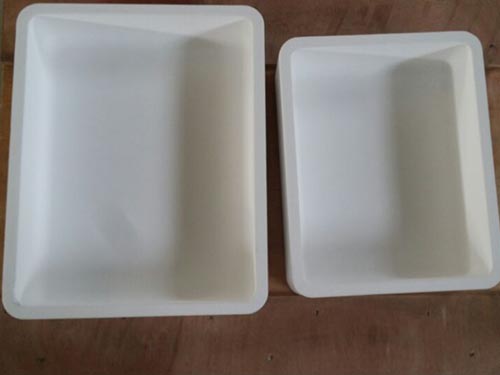1. Introduction to silicon dioxide ceramics
The chemical formula of silicon dioxide is SiO2. Silica has two forms: crystalline and amorphous. Silica existing in nature such as quartz, quartz sand, collectively are referred silica. Pure quartz is a colorless crystal, large and transparent prismatic quartz crystals are called crystals, purple ones with trace impurities are called amethysts, and light yellow, golden and brown ones are called smoky crystals. Chalcedony, agate and jasper are all colored quartz crystals with impurities. There are many kinds of SiO2 ceramics, such as crystal, silica glass, optical glass fiber and so on.

silica powder
2. Manufacture of silicon dioxide ceramics
(1) SiO2 glass (quartz glass)
Silica glass also exists in nature. In the past, silica sand and crystal were used as raw materials and melted at a high temperature of around 2000°C to form glass, which is called fused silica glass. Now adopting a new synthesis method, a new type of silica glass can be prepared. There are two methods:
①Chemical vapor deposition (CVD)
This method is obtained by oxidizing SiCl4, and the reaction formula is as follows:
SiCl4 O2=SiO2 ten 2Cl2. This method can produce silica glass with very high purity, water content and very little transition metal oxide.
② Ethyl silicate solution hydrolysis method
Ethyl silicate [Si (C2H5) 4] solution is hydrolyzed, gelatinized, heated and dehydrated, the same as high temperature molten SiO2 can be obtained glass. The glass produced by this method has high purity and can be synthesized at a lower temperature (around 1100°C), but more or less a little water remains.
(REPETITION REMOVED)
(2) Crystal
Natural crystals are formed under certain circumstances. Now people have found a way to artificially synthesize crystal through a lot of experiments.
That is, the use of high temperature, high pressure hydrothermal method (temperature 360~370℃, pressure 80~150MPa), using silica, silica gel, etc. to make artificial crystals.
3. Properties and uses of SiO2 ceramics
SiO2 glass has exceptionally good chemical stability, very low thermal expansion coefficient, excellent thermal shock resistance, and good transparency It has high transmittance of ultraviolet and infrared rays, good electrical insulation, and high operating temperature. Fused silica ceramic has the above-mentioned excellent properties, so its application fields are very wide. As in chemical industry and light industry, it is used as acid-resistant and corrosion-resistant containers, chemical reactor linings, glass melting pool bricks and backing plates, heat insulation materials, etc. In metal smelting, used as transportation pipelines and pumps for molten aluminum and molten steel Inner lining, container for holding molten metal, casting port, lining of high temperature hot air pipe, etc. Fused quartz can also be used to make kiln furniture sagger materials, which has good thermal shock resistance and high temperature performance.

quartz crucible
Declaration: This article is provided by CERADIR™ users or obtained from Internet, the content does not represent the position of CERADIR™. We are not responsible for the authenticity/accuracy of the article, especially the effects of the products concerned. This article is for study only, it does not constitute any investment or application advice. For reprinting, please contact the original author. If it involves the copyright and/or other issues, please contact us and we will deal with it asap! CERADIR™ has the interpretation of this declaration.







